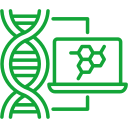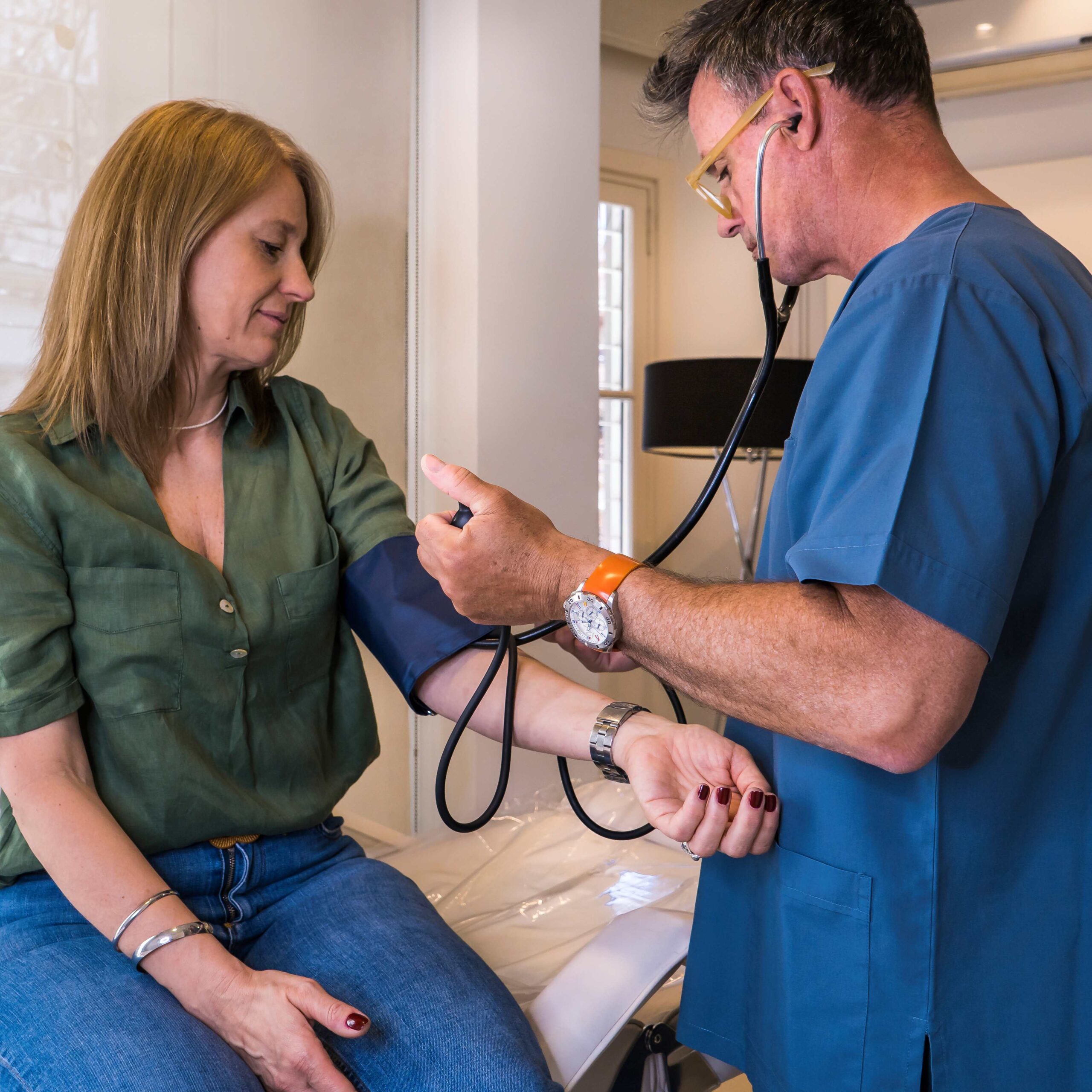Hormone Therapy
Hormone Therapy Services
There are various hormone therapies, including bioidentical hormones. But, according to the FDA and many medical groups, bioidentical hormones aren’t safer or more effective than traditional hormone therapy for menopause symptoms.

Bioidentical Hormone Therapy
Risks and Benefits
Hormone therapy can relieve menopausal symptoms like hot flashes, sleep problems, and vaginal dryness, and help prevent osteoporosis. But it’s usually prescribed in lower doses and for shorter periods (3-5 years) than before 2002.
Research shows that for many women, the benefits of HRT outweigh the risks. However, HRT can increase the chances of conditions like stroke, blood clots, and breast cancer. Lifestyle choices like smoking can also affect the decision to use HRT.
Hormone therapy might raise the risk of breast cancer, heart attacks, strokes, and blood clots. Topical hormone therapy has some benefits and fewer risks compared to other forms (Mount Sinai).
The main concern about HT safety is the long-term use of systemic estrogen therapy (ET) or estrogen-progestogen therapy (EPT). Most breast cancer risk is linked to EPT, and both ET and EPT have been tied to stroke and increased blood clots in veins, especially in women over 60.
In the end, it’s crucial to weigh the potential risks and benefits of hormone therapy with your healthcare provider to make the best decision for your health. The goal isn’t just to ease symptoms but to improve your overall quality of life.

Why Hormone Replacement Therapy Matters
Hormone Replacement Therapy (HRT) is a game-changer for many, tackling health issues and boosting life quality. From easing menopause symptoms to offering long-term perks, let’s see why HRT is a popular choice.
Tackling Menopause Head-On
Menopause marks the end of menstrual cycles and often brings a slew of annoying symptoms. Think hot flashes, sleepless nights, and vaginal dryness—stuff that can really mess with your day-to-day. HRT is the go-to fix for these menopause woes.
HRT steps in by replacing the hormones your body stops making as you hit menopause. Boosting levels of estrogen and progesterone can ease those hot flashes, night sweats, and dryness, leading to better sleep, improved sex life, and overall better days.
Perks for Women's Health
HRT isn't just about beating menopause symptoms. It also helps with bone issues like osteoporosis and osteopenia, which are common after menopause due to lower hormone levels.
Plus, HRT has been linked to a lower risk of bone fractures and even colorectal cancer, making it a solid choice for many women (Cleveland Clinic)
But, it's not all sunshine and rainbows. HRT can come with risks like breast cancer, heart disease, stroke, and blood clots.
These risks depend on your health and family history, so chatting with a healthcare provider before starting HRT is a must (Cleveland Clinic)

In a nutshell, Hormone Replacement Therapy offers a bunch of benefits, especially for women dealing with menopause. By easing symptoms and providing extra health perks, HRT can make life a lot better. Just remember to weigh the pros and cons and talk to a healthcare provider to see if it’s right for you.
Things to Think About Before Starting Therapy
Thinking about hormone replacement therapy (HRT)? It’s not a one-size-fits-all deal. Your health and personal situation matter a lot. Here’s what you need to know before diving in.
Check Your Medical History
Your health history is a big deal when it comes to HRT. If you’ve had blood clots, liver issues, certain cancers, or if you smoke, HRT might not be for you. According to WebMD,, these conditions can make HRT risky.
HRT can help with menopause symptoms and improve your life, but it’s not without risks. Think breast cancer, heart disease, stroke, and blood clots. So, a thorough medical check-up is a must before starting HRT. This helps spot any red flags that could mess with your treatment.
Personalized Treatment Plans
HRT isn’t a cookie-cutter solution. It should fit your needs. Experts say to start with the lowest dose for the shortest time, especially if you’re close to menopause (ages 50-59). The benefits are better for women who start HRT near menopause but get riskier as you age.
If you have a uterus, you’ll need progestogen with estrogen to avoid uterine cancer. Risks are generally lower for younger women, with estrogen alone being safer than estrogen-progestogen therapy for those in their 50s or within 10 years of menopause.
Remember, HRT can have side effects like breast tenderness, bloating, headaches, mood swings, and vaginal bleeding. Keep your doctor in the loop about any side effects.

Hormone Replacement Therapy Options
Thinking about hormone replacement therapy? Let’s break down your options so you can make the best choice for your health and lifestyle. Depending on your symptoms, medical history, and what you prefer, you can go with estrogen therapy or combination therapy.
Estrogen Therapy
Estrogen therapy is all about taking just estrogen. It’s usually recommended if you’ve had a hysterectomy. If menopause symptoms are driving you nuts after a hysterectomy or a hysterectomy with bilateral salpingo-oophorectomy, estrogen can be your go-to. You can take it in pills, patches, vaginal rings, gels, or sprays.
Got issues like vaginal dryness, burning, or pain during sex? Vaginal estrogen might be your answer. It comes in creams, gels, tablets, pessaries, or rings. The best part? It doesn’t carry the usual risks of HRT and doesn’t up your breast cancer risk. Plus, you can use it without progestogen, even if you still have your womb.
Combination Therapy
Still got your uterus? Combination therapy, which mixes estrogen and progestin, could be your jam. This combo lowers the risk of endometrial cancer compared to just taking estrogen. Progestin, a synthetic form of progesterone, also helps with those pesky hot flashes.
There are different flavors of combination therapy. Continuous combined HRT means you take estrogen and progestogen every day without a break. It’s usually for those who haven’t had a period for a year. Sequential combined HRT is for those still having periods but dealing with menopause symptoms.
At OneSite Wellness in Charlotte, NC, we’re here to help you figure out the best hormone replacement therapy for you. We want you to feel your best, ditch the fatigue, and get your energy back.

Safety and Risks of Hormone Therapy
Before jumping into hormone replacement therapy (HRT), it’s good to know the possible side effects and long-term risks that come with it.
Potential Side Effects
Hormone therapy can have some side effects. You might experience breast tenderness, bloating, headaches, mood swings, or even unexpected vaginal bleeding. These can vary a lot from person to person, so it’s super important to talk to your doctor if you notice anything off (Mount Sinai).
Common Side Effects | What You Might Feel |
Breast tenderness | Discomfort or sensitivity |
Bloating | Feeling full or swollen |
Headaches | From mild to severe |
Mood changes | Mood swings or emotional ups and downs |
Vaginal bleeding | Bleeding when you don’t expect it |
Long-Term Considerations
Using systemic estrogen therapy (ET) or estrogen-progestogen therapy (EPT) for a long time comes with some risks. According to Menopause.org, EPT is mostly linked to a higher risk of breast cancer. Both ET and EPT can increase the chances of having a stroke or blood clots, especially if you’re over 60.
The Women’s Health Initiative (WHI) study found that for every 10,000 women on combined HRT in a year, there were 7 more heart attacks, 8 more strokes, 8 more blood clots in the lungs, and 8 more cases of breast cancer (Health Canada).
Potential Risks | Extra Cases Per 10,000 Women |
Heart attacks | 7 |
Strokes | 8 |
Blood clots in the lungs | 8 |
Breast cancer | 8 |
But don’t freak out just yet. For many women, the benefits of HRT can outweigh these risks. Your personal health, family history, and lifestyle choices like smoking can also play a big role in whether HRT is right for you.
So, before you start HRT, make sure you understand the possible side effects and long-term risks. Keep an open line of communication with your healthcare provider about any symptoms or worries. They can help you figure out the best plan for your health.
Hormone Therapy Alternatives
Hormone replacement therapy (HRT) can work wonders for some, but it’s not everyone’s cup of tea. If you’ve got a history of blood clots, liver issues, certain cancers, or if you’re a smoker, HRT might not be the best fit (WebMD). Luckily, there are plenty of non-hormonal treatments and lifestyle tweaks that can help you manage symptoms and feel better.
Non-Hormonal Treatments
If you’re steering clear of Menopausal Hormone Therapy (MHT), don’t worry—there are FDA-approved non-hormonal options for dealing with menopausal symptoms and preventing bone loss. Some folks turn to complementary therapies like phytoestrogens, but the North America Menopause Society isn’t sold on supplements, herbal remedies, or acupuncture for hot flashes. Chat with your healthcare provider about non-hormonal treatments that might work for you. Make sure to spill the beans about all your symptoms and your medical history—yours and your family’s—so you can get the best advice.
Lifestyle Changes and Supplements
Tweaking your lifestyle and diet can make a big difference when it comes to hormone imbalances. Regular exercise, eating right, and getting enough sleep can all help you feel better. Eating foods rich in phytoestrogens might also give you a boost. These plant-based compounds can mimic estrogen in your body. Think soy products, flaxseeds, sesame seeds, and certain fruits and veggies. Supplements can offer some relief too, but don’t skip talking to a healthcare professional first. Some supplements can mess with your meds or cause side effects. And remember, the North America Menopause Society isn’t keen on supplements or herbal remedies for hot flashes.
